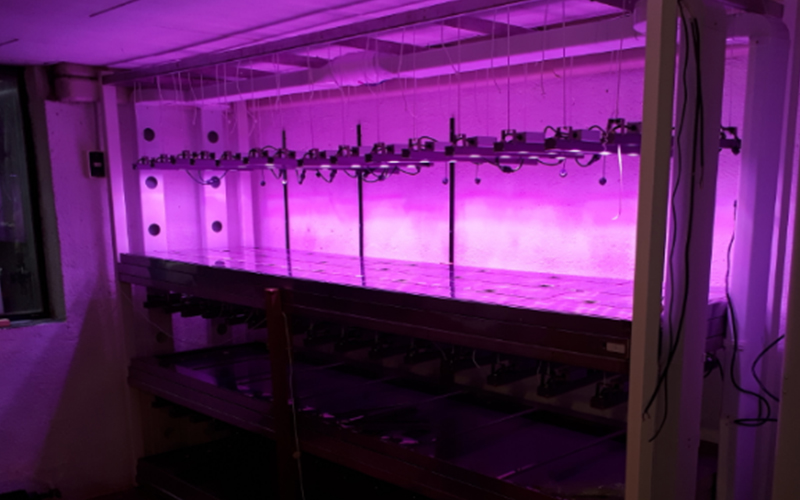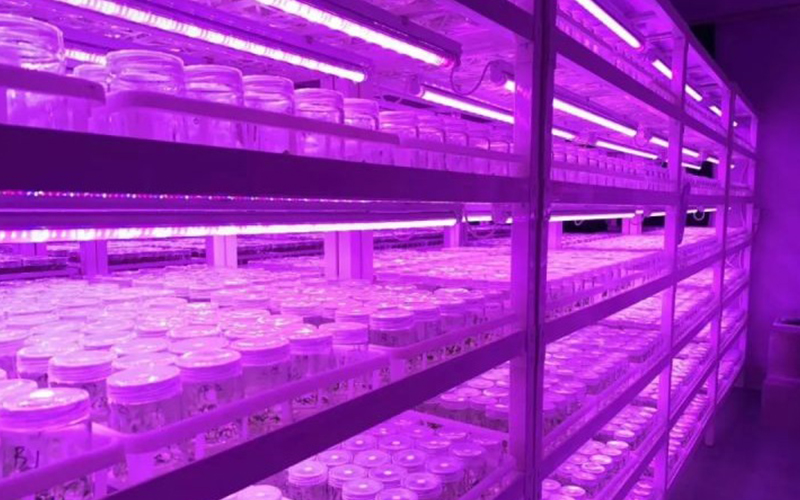Growing plants indoor has always been a tough job, especially in the areas with shorter day lengths and cool climate. Plants need plenty of light along with the suitable growing media, essential nutrients, and water to thrive well whereas, depriving them of any of the essentials leads to the stressed and sometimes abnormal grow.
Even if you're planning to grow your precious plants on a windowsill facing towards the sun, it sometimes becomes hard to expose them for the desired angle and time they need to give you stunting grow. Things don't get better until you bring in “sun” to see their splendid grow whereas, it only possible to showing them with indoor plant grow lights that behave like a sun, which is very much possible through installing with the bright LED lights, they need.
Once you're done with the installation of a brighter light source then you're halfway to grow your vegetables and plants you love. After adjusting growing media, nutrients, and water sources you can grow tomatoes, peppers, cucumber, and cannabis, including herbs, microgreens, and lettuces.
The best part of indoor grow is that you can harvest year-round irrespective of the climate conditions outdoor. It is customary to know how to choose indoor plant grow lights that entirely depends on the need of the plants and the area you need to cover using any light. Different indoor lights have a variable footprint that depends on the type of their makeup and power they draw to emit the light of the desired frequency. First of all, it is imperative to know the following features of the virtuous indoor plant grow lights, then decide accordingly;
Salient Features of Indoor Plant Grow Lights:

Selecting a superior light for your indoor plants will no more be a challenge once you're familiar with the salient features and associated risks of any grow light that you're supposed to install in the future.
Quality of Light Emitting Diode (LED):

Light is the topmost factor when growing plants indoor as it directly affects the nutritional, Phytochemical composition, and postharvest quality of plants especially, microgreens and leafy vegetables such as lettuces and salads. The quality of any lights is represented by the quality of LED chips used to illuminate it upon getting power. A quality light would enable plants to fix phenolic compounds, ascorbic acid, carotenoids, and anthocyanins in a better way to enhance their nutritional value making them crispier. The better the quality of a Light Emitting Diode, the better the quality of the produce.
Wavelength:
Some wavelength helps plants in the process of food assimilation. i.e. photosynthesis while others help in grow, development, flowering, and maturing. Blue light helps at initial stages of grow, red at flowering and maturity, white light creating a balance in chlorophyll a, chlorophyll b. Wavelengths possessing the photons of the visible light spectrum are considered responsible for a better grow environment. When buying an indoor plant grow lights, the wavelength must be a priority. Any light delivering a wavelength between 380 nm to 800 nm would stand ideal for indoor plant grow and development.
Wattage:
The wattage drawn determines the amount of energy any LED grow light will consume when powered. It is most important to know in the sense that any light that draws more energy to run any system will produce more heat in a grow room. Heat, in other words, damages the plants' foliage and spoils the quality of the produce. Whenever the wattage of your grow lights increase, it is a clear sign that it would be less effective for the purpose, it installed. So the focus must be on the lights that consume little energy and produces less heat in a grow room. There is also risk associated with circuit board breakage and high electricity costs if this factor in not considered.
Lumens:
Lumens are important in the sense that it is the amount of the total light emitted by the source in the visible spectrum and the amount that makes a footprint upon reaching a surface. Better the Lumens and brightness of the light, better the footprints, and yield, ultimately.
Light Intensity
It is dependent on the distance of the source from the plants. It increases if you bring a source near to the plants and vice versa. Different grow lights of the same capacity are compared by placing them at the same distance from the canopy of the plants. Adjustable lights make sense in the new developments and performing much better than the fixed lights. Anyhow, it depends on your choice and the preference which one is better for your indoor plants.
Here is a list of state of the art lights which provides you an opportunity to select best LED lights depending on their features and your plants need;























